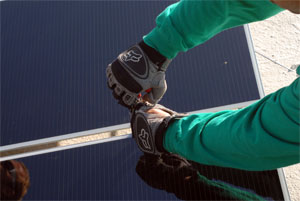 Even though many users of Solar Energy Panels might well want to take advantage of the financial benefits such as the feed-in tariff, they must have the site connected to the national grid so that they can transfer excess electricity made by the Solar Energy Panels set up. There might well be occasions where a site does not have a connection to the national grid, such as inaccessible areas, where the householder has to use oil or petrol driven generators for mains electric supply. But the householders might want to switch to Solar Energy Panels in order to save costs on fuel, which might be considerable in inaccessible areas.
Even though many users of Solar Energy Panels might well want to take advantage of the financial benefits such as the feed-in tariff, they must have the site connected to the national grid so that they can transfer excess electricity made by the Solar Energy Panels set up. There might well be occasions where a site does not have a connection to the national grid, such as inaccessible areas, where the householder has to use oil or petrol driven generators for mains electric supply. But the householders might want to switch to Solar Energy Panels in order to save costs on fuel, which might be considerable in inaccessible areas.
The Solar Energy Prices for fixing of the Solar Energy Panels can be about ?12,000 for a typical domestic site and the Solar Energy Prices, repaid by the feed-in tariff can be about ?500 to ?800 per year, and of course, any electricity that the Solar Energy Panels generate is free. Of course the independent Solar Energy Panels set up would not be able to supply the Solar Energy Prices benefits. In order to maximize the electricity made, a battery storage system is a must so that unused electricity can be stored for consumption when required, which would naturally, add to the Solar Energy Prices total.
While the case for independent Solar Energy Panels in inaccessible areas might be probably worthwhile, for householders in areas served by the national grid, a Solar Energy Panels set up might well need to be rather large so that it can provide enough electricity to satisfy the needs of a household. Of course if the householder wanted to also add battery storage functionality, then this would add to the Solar Energy Prices to be paid. It would need a determined individual to go for a independent Solar Energy Panels set up in a case like this, where the Solar Energy Prices to be paid might well be much more in excess of the ?12,000, and with no feed-in tariff on offer to offset the Solar Energy Prices, it might well be a long time before any benefits were paid.
 Alternative Energy HQ solar power for homes, wind energy, and bio fuel issues
Alternative Energy HQ solar power for homes, wind energy, and bio fuel issues





